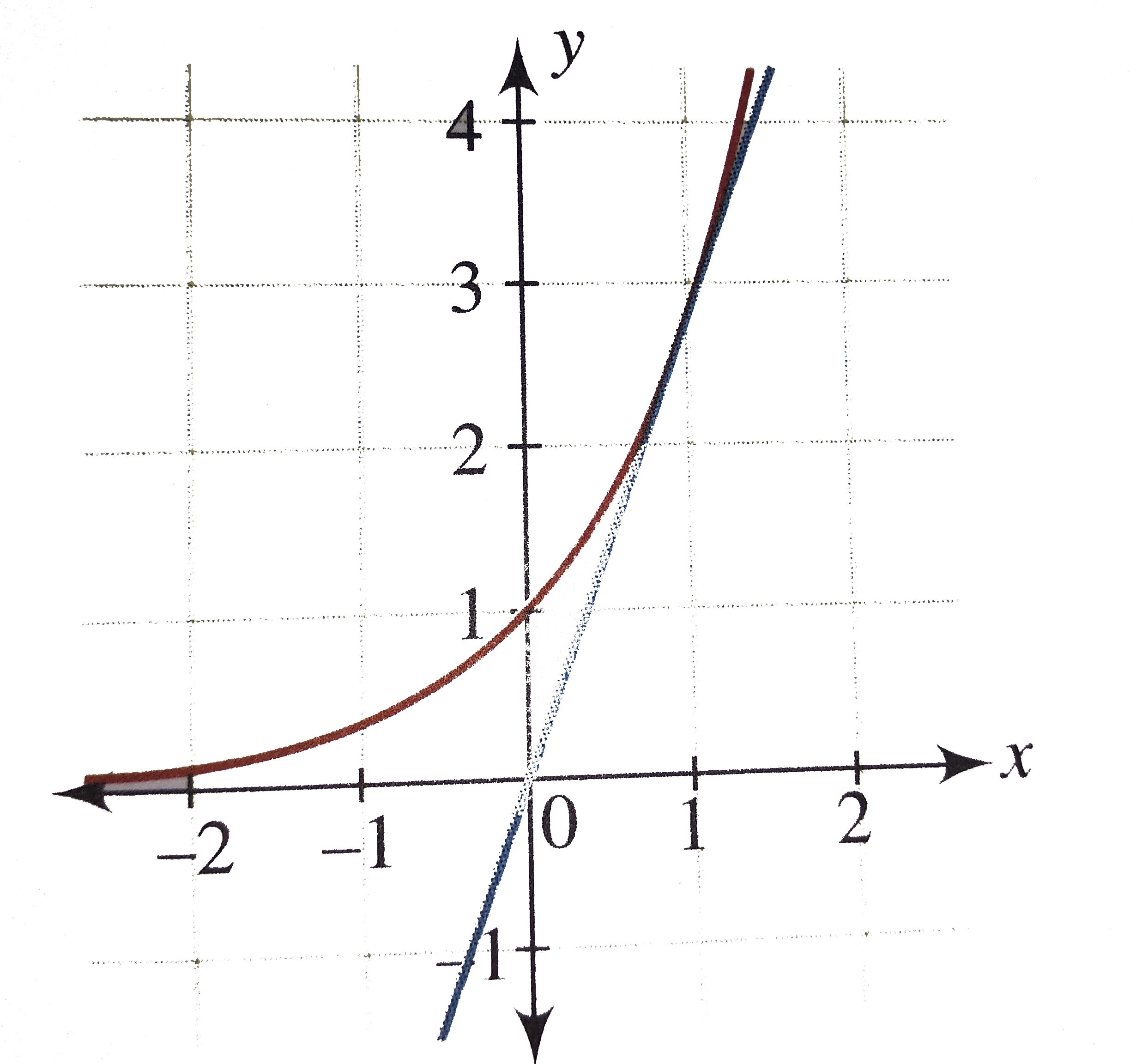If a continuous function f defined on the real line R assume positive and negative values in R, then the equation f(x)=0 has a root in R. For example, if it is known that a continuous function f on R is positive at some point and its minimum value is negative, then the equation f(x)=0 has a root in R. Consider f(x)=kex−x, for all real x where k is a real constant.
The line y=x meets y=kex for k≤0 at
1e
1
e
loge2
(a) kex−x=0 to have only one positive root means the line y=xk must be tangential to the curve y=ex.

Let the line touch the curve at (x1,y1), then
(dydx)x1=ex1=1k
Also y1=ex1andy1=x−1k
⇒x1=1⇒k=1/e
Topper's Solved these Questions
- BOOK - CENGAGECHAPTER - GRAPHS OF ELEMENTARY FUNCTIONS EXERCISE - Exercise34videos
GRAPHS OF ELEMENTARY FUNCTIONS
- BOOK - CENGAGECHAPTER - GRAPHS OF POLYNOMIAL AND RATIONAL FUNCTIONSEXERCISE - Exercise13videos
GRAPHS OF POLYNOMIAL AND RATIONAL FUNCTIONS
- BOOK - CENGAGECHAPTER - GRAPHS OF TRIGONOMETRIC FUNCTIONSEXERCISE - Exercise22videos
GRAPHS OF TRIGONOMETRIC FUNCTIONS
Similar Questions
If a continuous function f defined on the real line R, assumes positive and negative values in R then the equation f(x)=0 has a root in R . For example, if it is known that a continuous function f on R is positive at some point and its minimum value is negative then the equation f(x)=0 has a root in R. Consider f(x)=kex−x for all real x where k is a real constant The line y=x meets y=kex for k≤0 at no point (b) one point two points (d) more than two points
View SolutionIf a real valued function f(x) satisfies the equation f(x+y)=f(x)+f(y) for all x,y∈R then f(x) is
View Solution
Knowledge Check
- Question 1 - Select One
If a continous founction of defined on the real line R, assumes positive and negative values in R, then the equation f(x)=0 has a root in R. For example, if it is known that a continuous function f on R is positive at some point and its minimum values is negative, then the equation f(x)=0 has a root in R. Considetr f(x)=kex−x for all real x where k is real constant.
The positive value of k for which kex−x=0 has only root isA1eB1CeDloge2 - Question 2 - Select One
If a continous founction of defined on the real line R, assumes positive and negative values in R, then the equation f(x)=0 has a root in R. For example, if it is known that a continuous function f on R is positive at some point and its minimum values is negative, then the equation f(x)=0 has a root in R. Considetr f(x)=kex−x for all real x where k is real constant.
For k>0, the set of all values of k for which kex−x=0 has two distinct, roots, isA(0,1e)B(1e,1)C(1e,∞)D(0,1) - Question 3 - Select One
If the equation 4x3+5x+k=0(k∈R) has a negative real root then
Ak=0B−∞<k<0C0<k<∞D−∞<k<∞
Let f:R→R be a continuous onto function satisfying f(x)+f(−x)=0∀x∈R,. If f(−3)=2 and f(5)=4 in [−5,5] , then the equation f(x)=0 has
View SolutionLet f be a function defined for all x∈R. If f is differentiable and f(x3)=x5 for all x∈R(x≠0), then the value of f'(27) is-
View SolutionIf f be a function defined as f(x) = p for each x∈R, where p is a real number, then f is called
View SolutionIf a real function f(x) satisfies the relation f(x)=f(2a−x) for all x∈R. Then, its graph is symmetrical about the line.
View SolutionLet f(X) be real valued continous funcion on R defined as f(X) =x2e−|x|
The values of k for which the equation x2e−|x|=k has four real roots areView Solution

